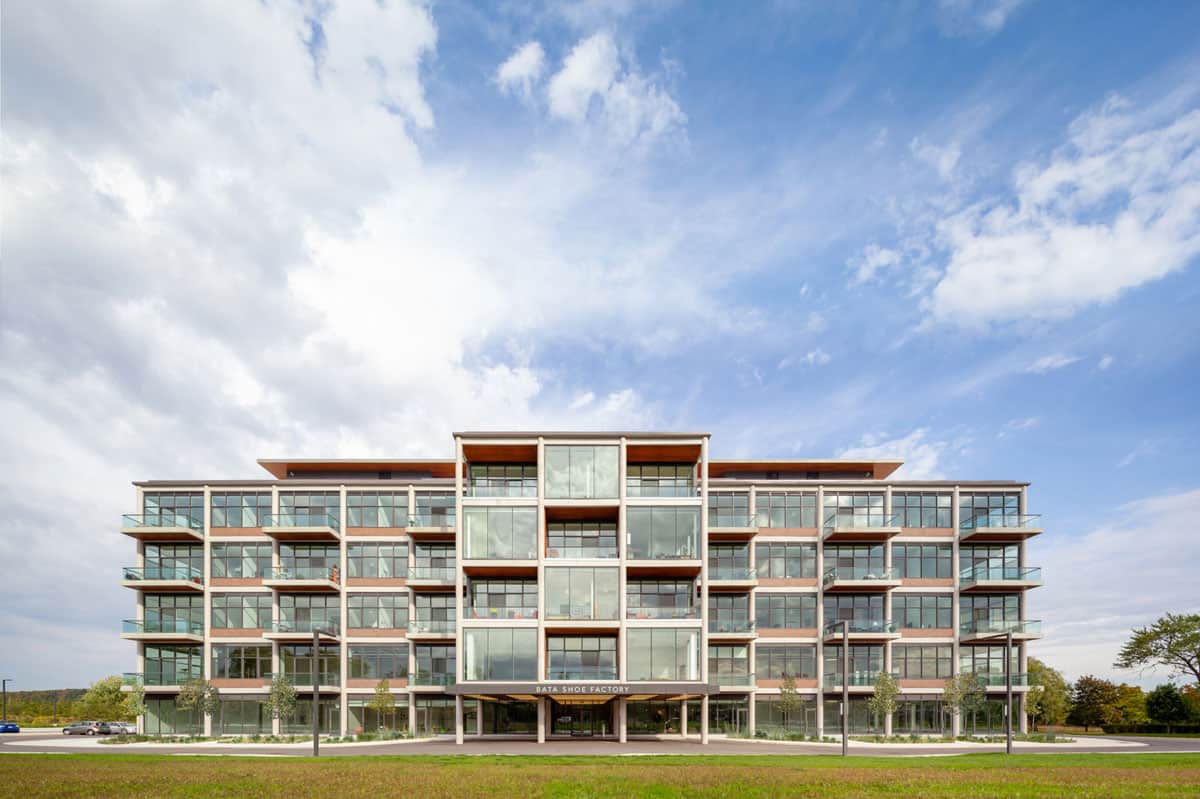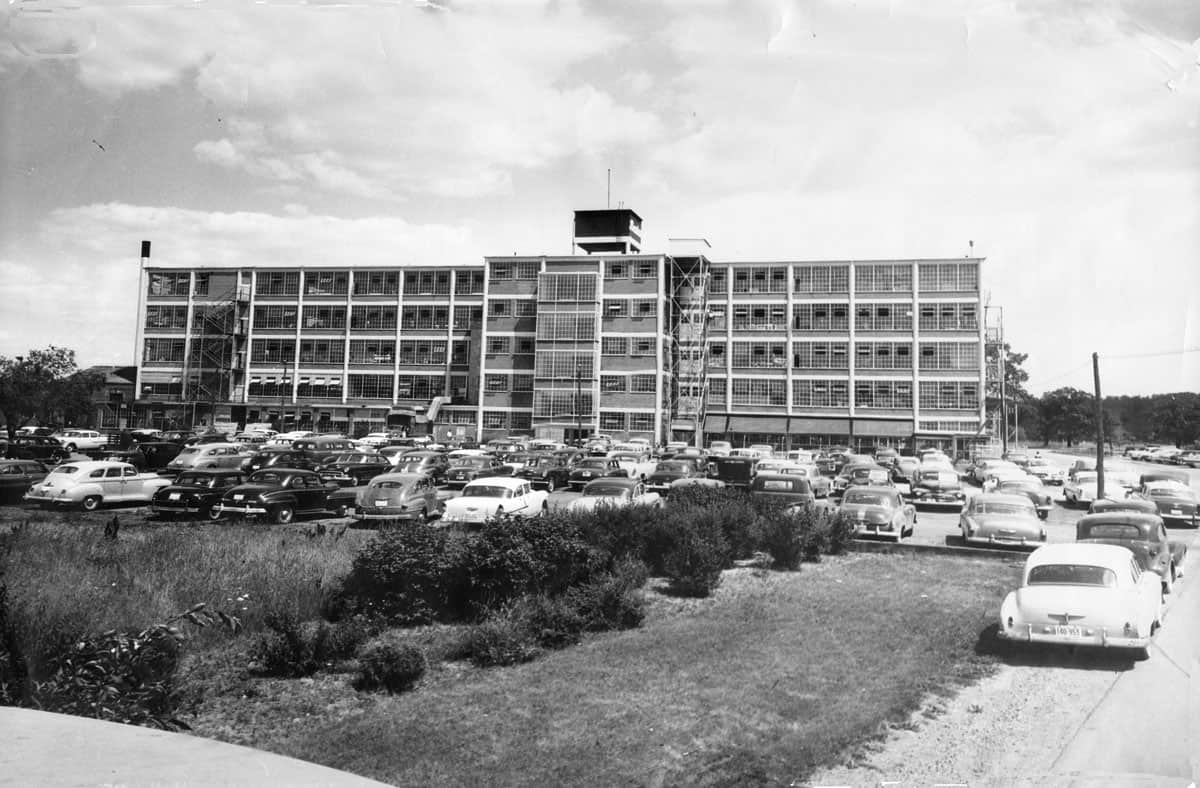"Modernism, that disciplined and unornamented early-20th century movement of architecture, graphic design and furniture, prided itself on two things: honesty and a limited palette.
Honesty allowed people to see structure expressed on a building or a chair; no hiding of chair legs under fabric skirts and no decorative stone covering I-beams. And a limited palette meant that one could easily blur a building’s boundaries between inside and out and create consistency from room to room; with furniture, a designer could achieve a sculptural look – think of a bright red Eero Saarinen Womb Chair – or, in graphic design, create a bold, striking advertisement using a just few primary colours and a limited amount of text.
These ideals were embodied into every brick, window and concrete column at the Bata shoe factory 10 kilometres north of Trenton, Ont. at Batawa. Indeed, it was modeled on the hometown factory in Zlin, Czechoslovakia, and others the company had built around the world (in 1938, the company “employed 42,000 people in Czechoslovakia and a further 23,000 abroad,” according to Bata literature).
When this location was selected in 1939, Thomas J. Bata, at the age of 24, and 164 Czechs arrived, plans in hand, and built the factory and the surrounding village: “They always built the factories a little bit outside the city, near water, a river was important because they had tanneries,” says Bata Development Corp.’s Bengt Gunnarsson, who has been involved with the Bata family in various roles for the past half-century.
Supplying shoes to postwar Canada, that humming, bustling factory would become a backdrop for Mr. Bata’s young Swiss bride, Sonja, when she arrived in 1946. As a young woman, Sonja Wettstein had dreamt of becoming an architect, but a case of tuberculosis put a halt to her studies. So, it was only logical that, some 60 years later, with the factory now shuttered, Mrs. Bata – philanthropist, officer of the Order of Canada, and widow – would ensure it was reborn as a residential building.
And Mrs. Bata, who died in February, 2018 at 91, would oversee all aspects of that rebirth, even down to window hinges and balcony handrails.

Heather Dubbeldam of Dubbeldam Architecture + Design, who joined the project approximately 18 months after Quadrangle, says that although the design process with Mrs. Bata could be “grueling,” having a “client who cares about that level of detail [and] the human scale,” brought out the best in everyone. Ms. Dubbeldam smiles when she remembers Mrs. Bata holding each of the 3-D printed handrail mockups, critically, until the Goldilocks moment, or when the team laid out different wood-veneered, phenolic resin panels (for exterior cladding) on the front lawn so Mrs. Bata could choose the “correct” one in sunlight."




